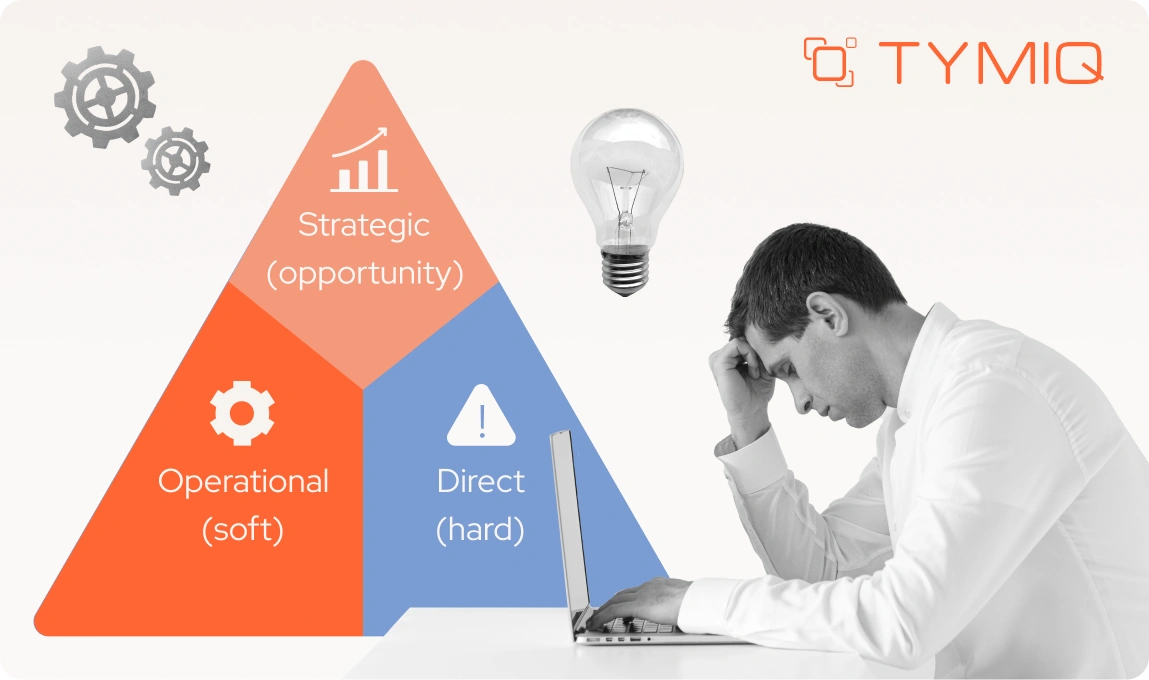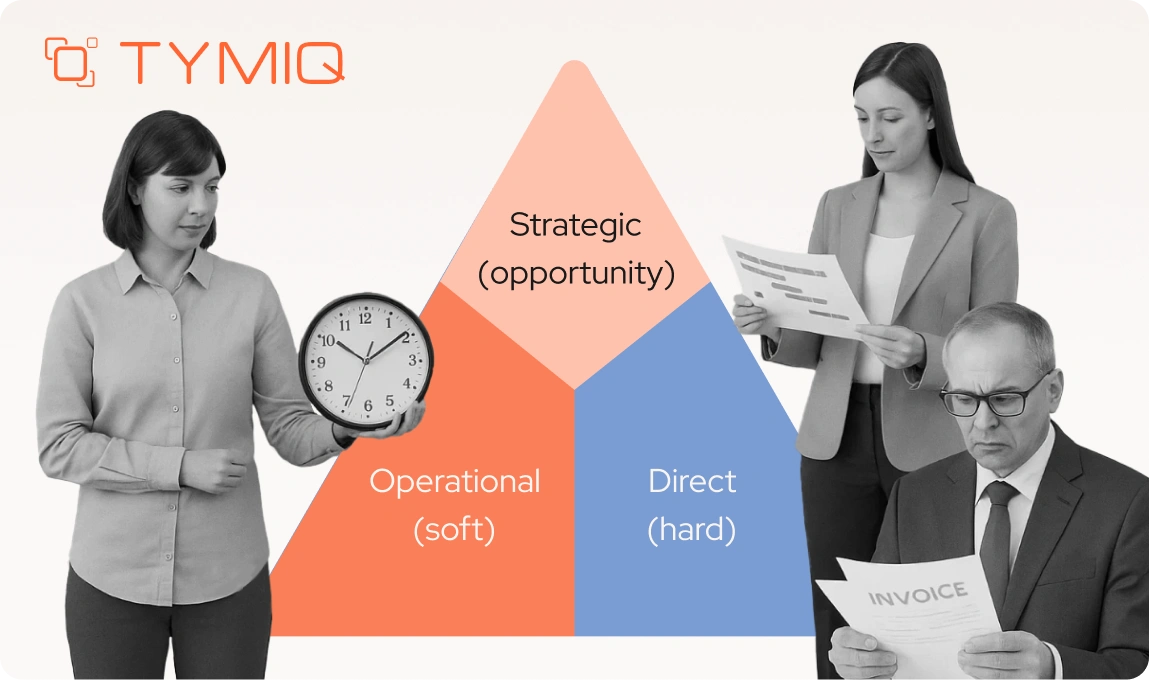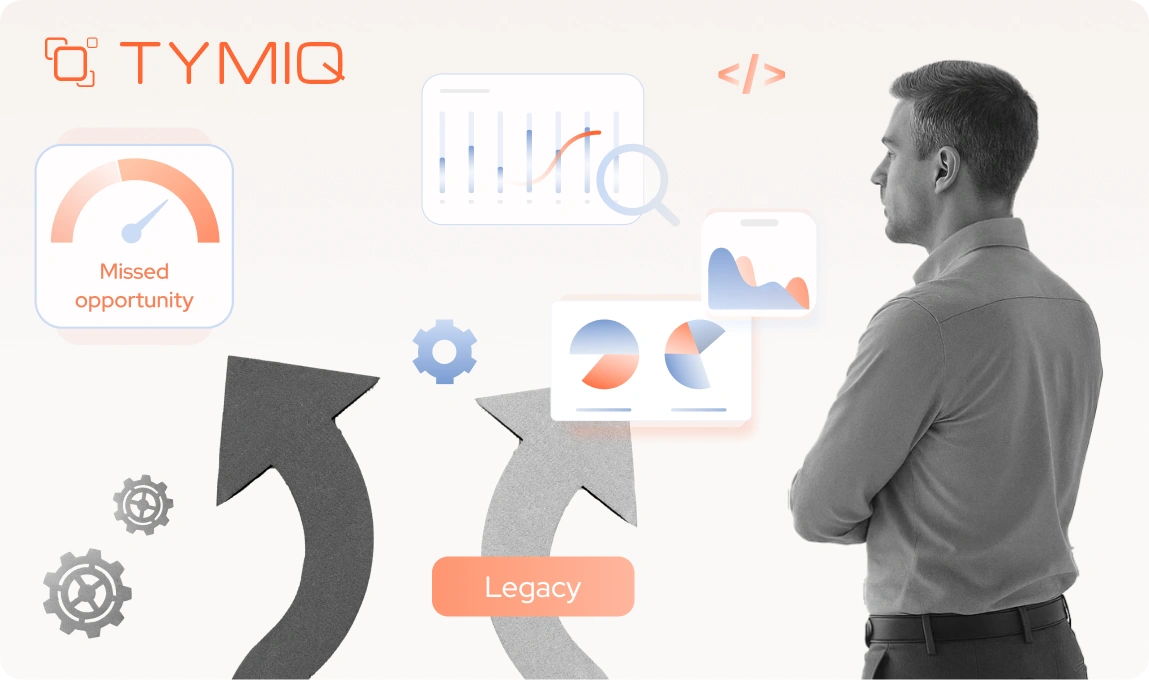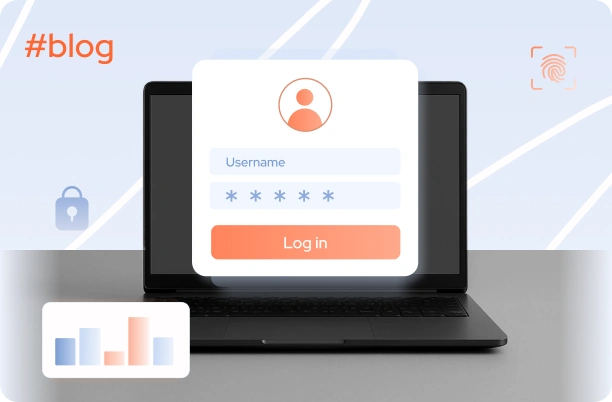The silent drain of legacy systems
“A global manufacturer spent 180% of their system’s replacement cost in 3 years without a single feature upgrade!”
Do nothing, and you quietly fund the same leak. With 31% of organizations composed of legacy systems, they can consume up to 60–80% of IT budgets:
- Directly. Renewals, emergency fixes, and premium contractors turn maintenance into a slow bleed.
- Operationally. Manual work, brittle handoffs, and longer outages siphon hours you never get back.
- Strategically. Slower launches, dulled customer experience, and missed bets cap your upside.
For a CFO, it looks like prudence. For a CTO, it feels like necessary triage. For both, it is compounding loss: every quarter, the meter resets and the drain resumes.
Quick visual: your annual “do-nothing” cost mix

If you delay modernization, you pay three taxes at once: cash, capacity, and growth. The next sections make it totally visible and give you a 3-minute way to price your own “do-nothing” bill.
The hard costs you can’t ignore
Maintenance contracts
- Renewal creep turns “keeping the lights on” into a budget escalator. You pay more each year for the same capability.
- Rare-skill support drives premiums. We mean scarce expertise and aging hardware inflate invoices without adding value.
- During migration, you often fund two systems to stay safe: the legacy stack and the modern build. That parallel run is real money.
Emergency repairs
- Outages last longer when only a few people understand the stack - recovery shifts from minutes to hours, especially after hours.
- Taking over code from another vendor is complex and contractor-heavy, precisely when rates are spiking.
- War-room fixes consume weekend premiums and senior attention. You pay for speed, not improvement.
Security patch deficit
- End-of-support systems do not receive patches. Vulnerabilities accumulate, and breach costs land in the multi-million range plus regulatory exposure.
- Modernization while maintaining uptime is feasible, but delaying it keeps you exposed and spending on stopgaps.
The soft costs that compound over time
Bottlenecks
- Twenty-second waits on mission-critical dashboards are a throughput loss at scale. In one port system, legacy delays and browser incompatibility slowed everyday work until reengineering removed the drag.
- Example math. Duplicate data entry - 3 hours per week per employee × 50 staff = 7,800 hours a year. At $30 per hour, that is ~$234,000 you cannot reinvest.
Talent retention
- Old stacks make onboarding feel like archaeology. Teams wrestle with vendor-inherited code, fragile handoffs, and nonstandard environments. This kind of friction stretches “week one” into week three.
- Signal to watch. If it takes more than two weeks to gain stable access and ship a trivial change, expect morale dips and higher churn. It is especially common among senior hires who joined to build, not babysit.

Compliance drag
- Legacy systems rarely meet today’s reporting and retention standards without add-ons. Modernization work often must restore compliance baselines (for example, CAP 670 ATC02.36 for electronic document handling) and rebuild audit-ready documentation.
- Typical pattern. You bolt on reporting to bridge gaps, then carry annual licenses and support for tools you would not need in a modern stack.
The opportunity costs you do not see in the P&L
Slower time-to-market
- Every month you delay an integration or API, another month a product cannot sell. Modernized teams release commercial versions fast and seize a niche. This is the right speed where legacy denies you.
- Example math. Six months × $200,000 expected monthly revenue = $1.2 million deferred, not deferred and recovered.
Innovation stall
- Legacy throttles what you can try. Teams reengineer the platform and integrate new services, including customs, agents, and personnel, without disrupting operations. That integration headroom is your experimentation budget.
- Signal. Your partners are shipping data products and self-service feeds. If you spend this time wrestling with point-to-point fixes, you are surrendering pace and option value.
Customer experience erosion
- Outdated stacks drag on usability, and even basic browser compatibility becomes a tax on patience. That friction compounds into churn you will not see until the quarter closes.
- Example math. A subscription product losing 12% of customers annually from poor UX on a $50 ARPU base sacrifices $72,000 per 1,000 customers every year.

Competitive advantage lost to legacy
Legacy does not just slow you down. It hands your edge to whoever modernized. Here is how the gap turns into outcomes you can feel on the balance sheet.

Real-world snapshots
Logistics — seaport operations. A legacy port system showed delays of up to 20 seconds on mission-critical dashboards and struggled with modern browsers. We reengineered the stack, kept service available 24/7 during a parallel migration. Then we opened integrations with customs, ship agents, and personnel. The project ran for nine months in 2021 and continues under maintenance.
Aviation — ATC information display. Coverage spanned multiple airports across the US and Europe. We inherited the legacy .NET Framework system and planned a structured roadmap. Finally, we executed a gradual migration to .NET Core without service disruption. The modernized version runs in any standard browser and follows CAP 670 ATC02.36 for electronic document handling.
E-procurement — 2M-customer sourcing platform. We moved from third-party hosting to Google Cloud, implemented a microservices-based architecture, and tuned performance. The platform now targets real 24/7 availability (no downtime during feature releases), with on-call coverage, rigorous log reviews, and automated plus manual monitoring. Infrastructure costs were reduced as part of the migration.
IoT — remote asset monitoring. We built hardware and software into a single system and released the first commercial version quickly, helping the client secure a niche in their market.
When doing nothing becomes riskier than change
Use this quick threshold test. If two or more are true, you have crossed the inflection point.
1. Your core stack is deprecating
The platform you rely on is winding down. In the ATC case, the legacy .NET Framework required a planned move to .NET Core, flagged as a deprecating risk while the old system stayed live.
2. You already need a parallel run to stay safe
Operations remain continuous only because you run legacy and modern side by side. That is a clear sign that replacement, not patching, is the safer path.
3. Releases fight uptime
If “new version” still means weekend work and controlled windows, your change risk is too high for business speed. Teams that reengineer for continuous service maintain smooth operation even during releases.
4. Vendor-inherited code is a bottleneck
When only a few specialists can touch production, every incident is slow and expensive. Taking over and stabilizing vendor code is complex by nature, and it does not get easier with age.
5. Compliance or standards pressure is growing
If you are bridging gaps with add-ons, you are paying for time. Modernized ATC systems, for example, align with CAP 670 ATC02.36 out of the box.
6. Integration backlog blocks revenue
Critical links like customs, ship agents, and personnel systems wait on brittle legacy. Reengineered platforms clear these integrations without stopping operations.
Risk score
Count how many statements match your reality:
- 0–3 points = Manageable. Keep maintaining, but plan your parallel path.
- 4–6 points = Urgent. Initiate a modernization program with a parallel run to protect uptime.
Why this matters now
You can modernize while you run, keep service available 24/7, cut change risk, and land clean integrations. Waiting only raises the cost of doing the same work later.
Conclusion - the compounding interest of inaction
Remember the manufacturer that paid 180% of the replacement cost in three years with zero new features. That is what delay looks like in the real world: renewal creep, emergency premiums, and stalled integrations while you keep legacy and modern running side by side to stay safe.
Every quarter you wait, assume your hidden cost rises by ~2–4%. This is a conservative translation of typical annual escalations into quarterly impact. It is the same pattern you see on the ground: parallel run to protect uptime, 24/7 operations even during releases, and integrations that only unlock after reengineering.
You can break the cycle without taking systems offline. Modernize in parallel, keep service live, and clear the integration backlog (customs, ship agents, personnel) while strengthening monitoring and on-call coverage.













.svg)

